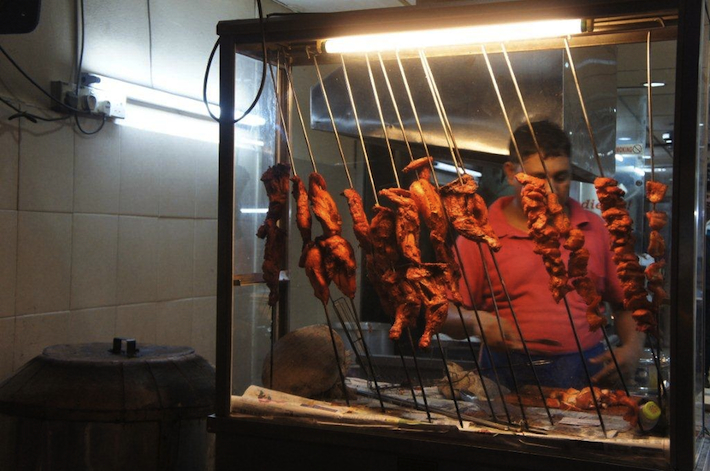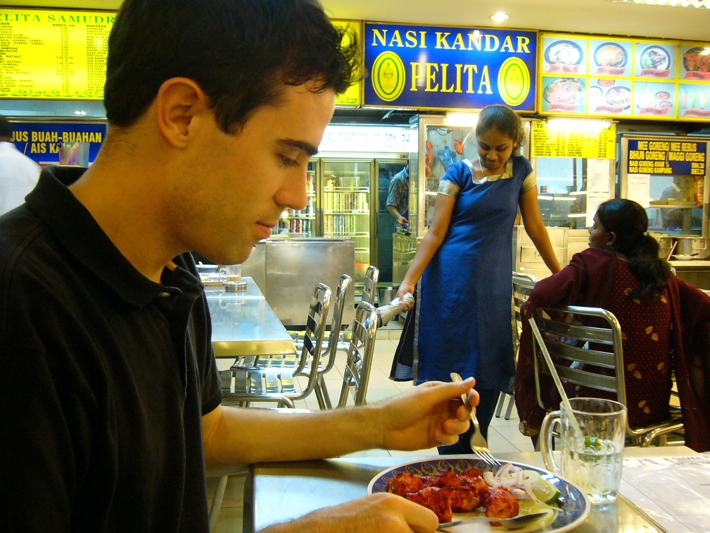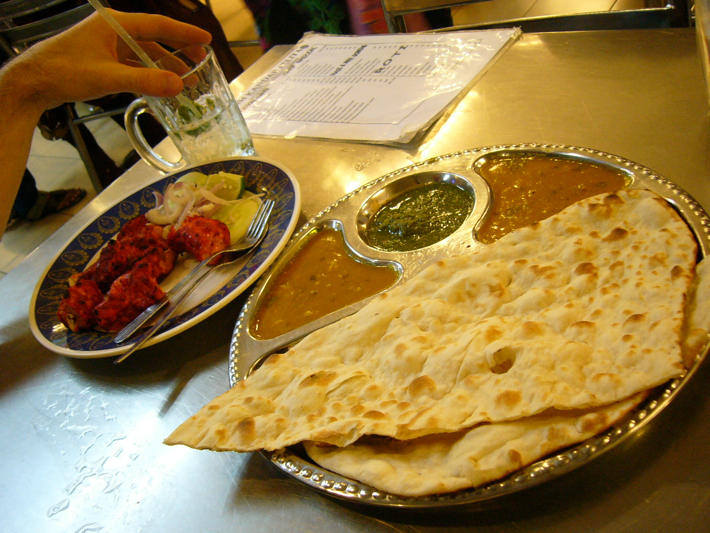It’s dusk, and the concrete is still hot from the sun. I’m walking across the street from the University in Penang, Malaysia. A faster than usual pace, maybe from hunger, or maybe to sense a breeze. I would take the sun back, if the wind promised to return.
Cars are backed up, honking, waiting for a space. Noisy motorcycles weave impatiently, oblivious to a fresh-off-the-boat foreigner who hadn’t yet understood that listening allows you to see in all directions. I freeze when one brakes in front of me, its horn comically weak for how vigorous its driver pounds on it.
The motorcycle winds around me as if I'm a fragile traffic cone, and is gone before I find safety in front of a corner shop, a mamak stall. It's hotter here. I turn and my eyes catch the intense glow emanating from a barrel-shaped clay oven. I have this urge to peer down into it, as if I have found the source of the island’s unforgiving heat. But when I do, I see the radiating red of skinless chicken legs, roasting over coals.
“You want to try?” the Indian-Muslim man asks. His apron red from whatever marinated the chicken.
“What is it?”
“Tandoori chicken, boss.”
Penang is well known for its tandoori chicken, but it didn’t originate there. Nor did it originate in the state of Tamil Nadu in Southeast India where the majority of Indian-Muslims living in Penang trace their ancestry to.
The version of Tandoori chicken that we have become familiar with at Indian restaurants is said to have been the brainchild of a cook during the 1920s in Peshawar – an area in north Pakistan, but part of the British colony of India at the time.
While he wasn't the first person in South Asia to stick a piece of chicken into a tandoor - a traditional clay oven - he can be credited with commercializing, and popularizing, the menu item in his restaurant, which then quickly became a staple item throughout restaurants in Pakistan and North India, and to other places within the British Empire like Penang.
He may also be credited with creating that bright fiery red color that we now associate with authentic tandoori chicken.


What creates that unnaturally looking red hue of tandoori chicken? Food coloring dyes.
It’s unclear if a red dye was originally used in the 1920s recipe, but the idea may have stemmed from the red tandoori spice blend used to marinate the chicken. The blend probably included a higher proportion of red chili powder – notably the brightly colored Kashmiri Chili Powder commonly used in the region.
While the color seems to get all the attention, the only true distinction of tandoori chicken is the cooking process. Authentic tandoori chicken is cooked in a tandoor, roasting quickly over embers at a high temperature to sear the spiced yogurt marinade onto the chicken meat.
But as the popularity of tandoori chicken spread beyond South Asia, it became less about the cooking process and more about the color and the flavor (just as Teriyaki originated as a cooking technique, and later developed into a general flavor outside of Japan).
Like curry powder, there is no standard tandoori seasoning blend. However, a good tandoori mix should consist of a variety of warming spices commonly used in Pakistan and North India such as cardamom, ginger, garlic, cinnamon, clove, red chili, cumin, turmeric, coriander, fennel, and black pepper (or simply Garam Masala with a few additional spices).

To make tandoori chicken, a dry (or fresh) tandoori seasoning is mixed with yogurt, salt, and usually a citrus juice like lemon or lime. The simple marinade is then rubbed well into skinless chicken legs that have had deep slits cut into the meat to allow the flavor to penetrate. While the chicken is marinating, wood or coal is added into a tandoor, and burned until embers develop. When the tandoor is ready, the chicken is skewered, carefully placed into the tandoor as not to touch the clay sides, and roasted until crisp on the outer layer and just cooked in the middle.
Tandoori chicken is generally served with naan bread, and a mix of veggies and dips, which can vary from place to place and restaurant to restaurant. In Penang, these usually include slices of cucumber and very thin slices of red onion and carrot; lime wedges; mint chutney and dahl.
For our next post, we will feature a recipe incorporating our new Tandoori Seasoning, and a chance for you to win it along with a few other delicious grilling blends.









